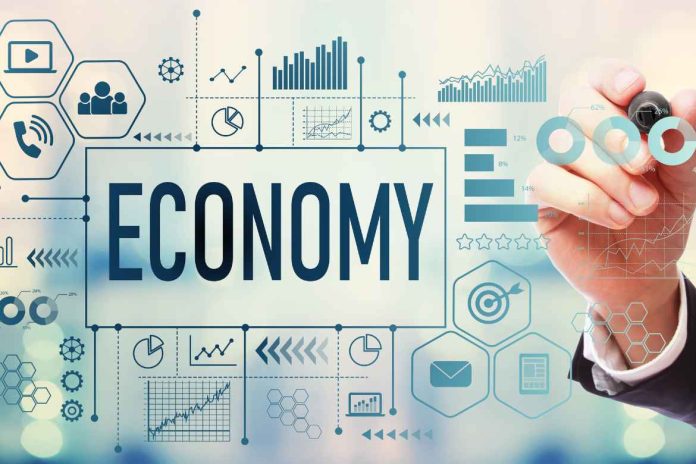In today’s evolving business environment, sustainability and the circular economy have moved from being optional to essential—especially for small and medium-sized enterprises (SMEs). To stay competitive in a market increasingly focused on reducing waste and maximizing resource efficiency, businesses must adopt transformative strategies. But where do you begin?
The path to business transformation may seem complex, but with a clear, structured approach, integrating sustainability into your operations becomes achievable. This guide will walk you through five essential steps to implement circular economy solutions, helping your business thrive while staying environmentally responsible. We’ll explore emerging trends, offer actionable advice, and spotlight industry leaders making a difference.
Whether you’re new to circular economy consulting or looking to enhance your current strategies, this guide provides the insights you need to move forward confidently.
Understanding Business Transformation in the Circular Economy
In a world where sustainability is no longer just a buzzword, the circular economy offers businesses a practical framework for transformation. Moving away from the traditional linear model (take, make, dispose), the circular economy opens new opportunities for innovation and efficiency, especially for SMEs. Think of it as refining your business into a well-rounded, resource-efficient machine.
Key Principles of the Circular Economy
The circular economy rests on three foundational principles:
- Waste Reduction: Instead of following the ‘take, make, dispose’ model, the circular economy aims to eliminate waste. This shift allows businesses to design processes that prevent waste from the start, embedding sustainability into the company’s core.
- Resource Efficiency: Efficient use of resources reduces costs and environmental impact. By maximizing the value of materials, businesses can stretch their investments further, much like getting the most out of every dollar in your pocket.
- Product Lifecycle Management: Rather than ending a product’s life in a landfill, the circular economy focuses on refurbishing, reusing, or recycling products. It’s like giving your products a second life and turning potential waste into future opportunities.
Benefits of Circular Economy Solutions
Why should SMEs adopt circular economy principles? The benefits are clear:
- Cost Savings: Effective resource management and waste reduction can significantly cut operational costs, like finding hidden savings in your everyday processes.
- Improved Brand Reputation: As consumers become more eco-conscious, businesses adopting sustainable practices can enhance their brand’s image and appeal to this growing market segment.
- Regulatory Compliance: Governments are increasingly implementing sustainability-focused regulations. By staying ahead with circular strategies, your business can avoid future compliance issues and be better prepared for regulatory shifts.
Five Steps to Implement Business Transformation Solutions
Achieving meaningful business transformation involves more than just upgrading operations—it requires a fundamental shift in thinking. With the circular economy at its core, businesses can not only improve environmental impact but also gain financial advantages. Here are five key steps to guide your transformation:
Step 1: Assess Current Business Operations
Start by conducting a thorough analysis of your current processes. Identify areas that are wasteful or inefficient, especially in resource use. This is like a check-up for your business, helping you pinpoint strengths and opportunities for improvement. Many companies that consult on circular economy solutions, such as Circularity Edge, emphasize the importance of waste reduction and resource efficiency as quick wins for SMEs.
Step 2: Define Clear Transformation Goals
Once you understand your current operations, set SMART goals (specific, measurable, achievable, relevant, time-bound) to guide your transformation. Clear objectives, such as reducing waste by 20% within a year, help track progress and maintain momentum. Successful companies like DuPont have used these strategies to incorporate circular economy principles and achieve new efficiencies.
Step 3: Engage Stakeholders and Build a Team
Sustainability transformation requires collaboration. Involve stakeholders and assemble a dedicated team that is committed to the process. Open communication ensures everyone understands the benefits and objectives, creating a sense of ownership that drives motivation. Companies like Interface, known for their circular efforts, built a culture of sustainability by engaging employees at every level.
Step 4: Develop and Implement a Strategic Plan
Crafting a strategic plan is critical. This plan should align with your sustainability goals, outline timelines, responsibilities, and resources, and anticipate potential challenges. Treat it as a living document that evolves with new insights. Businesses highlighted by the Ellen MacArthur Foundation often cite robust strategic planning as key to their long-term success in sustainability.
Step 5: Monitor Progress and Adapt
Continuously evaluate your progress to ensure you’re on track with your goals. Be flexible and ready to adapt to unexpected challenges or opportunities. Monitoring systems, such as feedback loops and key performance indicators (KPIs), are invaluable in adjusting your strategy as needed. Companies like Philips have successfully adapted their circular strategies to stay ahead of market trends and challenges.
Case Studies: Circular Economy Leaders
Dell and Interface provide inspiring examples of companies successfully integrating circular economy practices. Dell’s “NextWave Plastics” initiative and e-waste recovery programs, and Interface’s strides in waste reduction and sustainable materials, serve as models for how businesses can reshape their processes to embrace sustainability.
Emerging Trends in Business Transformation and Sustainability
As businesses face increased pressure to innovate and embrace sustainable practices, digital innovation and supportive government policies are driving change. Technologies like data analytics, blockchain, and IoT are enabling companies to better manage resources, while government incentives and regulations are encouraging more businesses to adopt circular economy principles.
Conclusion: Take the First Step Toward Transformation
For SMEs aiming to stay competitive and suFor SMEs aiming to stay competitive and sustainable, embracing business transformation solutions grounded in the circular economy is crucial. These strategies not only help reduce waste but also unlock new growth opportunities and ensure long-term resilience. Explore the benefits of circular economy consulting with partners like Circularity Edge to stay ahead of emerging trends. Your business’s transformation journey starts today—what steps will you take?







